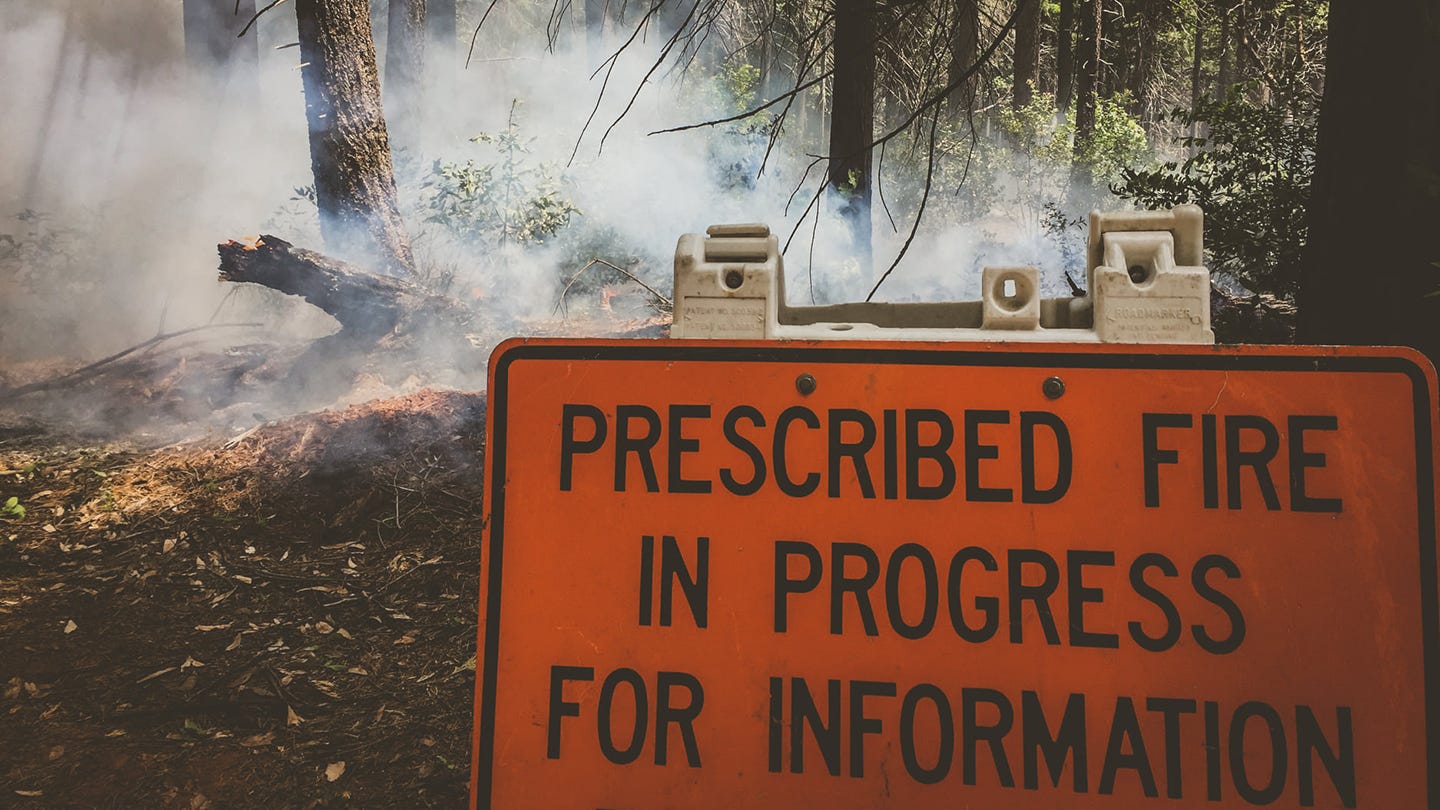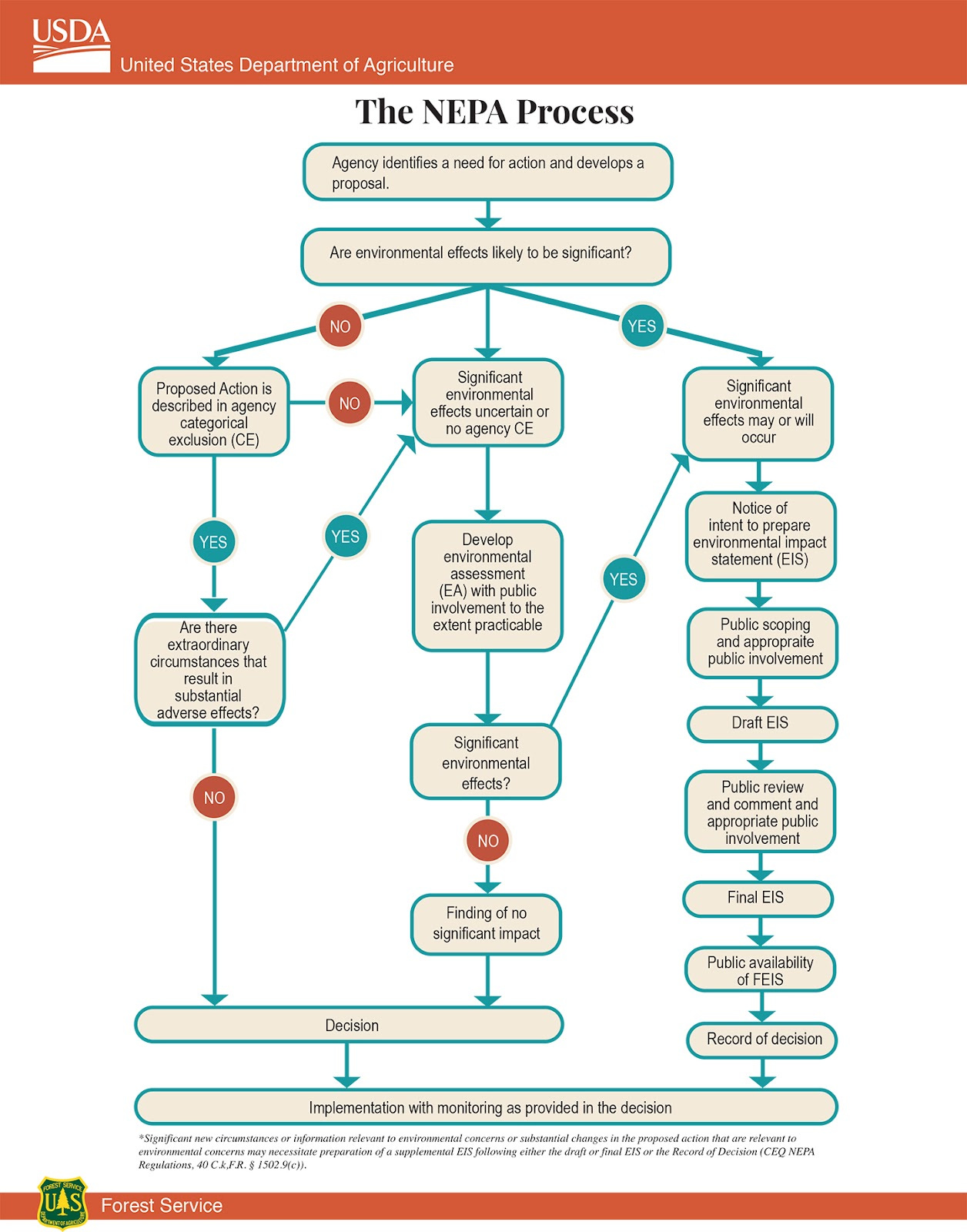Volume 2, Number 45 - Monday, May 13
Published every Monday and Thursday

Perspective
LAST OCTOBER, Sequoia and Sierra National Forests began a combined effort — environmental review for prescribed fire projects covering up to 82,000 acres per year on the two forests for five years — more than 400,000 acres overall.
For purposes of comparison, the two national forests cover about 2.4 million acres. Both have giant sequoia groves, although most are in Giant Sequoia National Monument, which is part of Sequoia National Forest.
In a 38-page document you can read HERE, the agency explained the need for the proposed action, providing background and information about existing and desired conditions, along with other details.
It describes several large-scale disturbances in the area over the past decade, ranging from unprecedented beetle-induced mortality associated with drought to historic large-scale wildfires, and, most recently, 100-year+ level storm damage.
"This has created not only a crisis of large-scale severe disturbance response but also has cast greater concern over the resilience of remaining acres that have moved radically out of natural conditions — the natural range of variation over the last 100 years. This departure from natural range of variation has placed natural resources, forest infrastructure and local communities at increased risk." (I've left out the reference citations for these statements, but you can find them in the original document.)
The document explains why the Forest Service has planned this burning and what it hopes to accomplish. In a nutshell, the goal is forest health and specifically bringing areas toward a more natural range of variation so that future wildfires would burn at generally lower, more natural intensities.
What I want to share this morning is not so much about this project as about the process the Forest Service is using to prepare for it—and the response it has received so far.
Many readers already know far more about the National Environmental Policy Act than I do, and if you’re one of them, you can skip the next six or so paragraphs. (Or you can read them and send me a note if I missed something).
For the rest of you, I know this might be a bit of a miserable slog, but understanding at least this much about NEPA is essential for understanding issues related to the Forest Service’s giant sequoia management.
NEPA has been on the books since Jan. 1, 1970, and requires federal agencies to assess their proposed actions' environmental effects before making decisions. The Forest Service provides a good overview of how it works to follow NEPA HERE with a brief overview HERE. And I’m including a graphic from the Forest Service below.
As the agency states in the brief overview, there are three levels of analysis under the National Environmental Policy Act. They include categorical exclusion (CE), environmental assessment (EA) and environmental impact statement (EIS).
A CE is used when the agency believes that a project does not have significant environmental impacts. The environmental impacts of a proposed action may have been studied many times in previous EAs with a “finding of no significant impact” on the environment (FONSI).
If a proposed action does not qualify for a CE — or there is uncertainty about how it would affect the environment, the agency performs an EA to determine if there are significant environmental impacts. If not, the agency would issue a FONSI. If there may be significant impacts, the agency is then required to develop an EIS.
Sometimes, the Forest Service quickly determines that an EIS is required. That decision may be relatively quick, but the EIS process takes much longer than an EA.
Which brings us back to the matter at hand.
Environmental assessments all begin with scoping. In layman’s terms, scoping outlines the proposed action and includes background and other components intended to provide the public with a good overview.
In the case of the prescribed fire project proposed for Sequoia and Sierra National Forests last October, here’s what’s happened so far:
Scoping letters were sent to “interested parties,” and the proposed project was announced on Oct. 19, 2023, with replies due by Nov. 20, 2023. The respective letters were signed by Forest Supervisor Dean Gould for Sierra National Forest and Teresa Benson for Sequoia National Forest. Benson was the forest supervisor at the time but retired at the end of December. The letters opened a 31-day comment period on the EA. The letters also noted that “only those who respond to this request for comments will remain on the mailing list for this project,” and “individuals and groups providing timely and specific written comments during this or any future designated opportunity to comment will be eligible to participate in the objection process.”
By the end of the scoping comment period, the Forest Service received 1,434 comments. You can read them all HERE. Some are from individuals, and some are from organizations. Some are lengthy and detailed, and others seem to have been submitted in response to a campaign urging individuals to respond in support of a particular point of view.
According to the published project milestones — assuming the agency continues with the EA for this project — a comment period on the EA will begin about June 1, followed by an objection period around July 1, with a decision and implementation around Sept. 1.
I should mention that the project calls for “pre-treatment actions,” including mechanical and hand-thinning, pruning and limbing trees, mechanical chipping and mastication, machine hand-piling and felling some hazard trees.
In other words, before the burning, the agency plans to remove vegetation (some of which will be piled and burned) and cut some trees and it may use machines to do that work.
The EA is intended to cover about five years of work, and what specific work would be done in each area would be determined in advance of the work, following guidelines in the EA.
Among responses during the scoping comment period was one from attorney Rene Voss on behalf of Sequoia ForestKeeper, the Kern-Kaweah Chapter of the Sierra Club and the Tule River Conservancy.
Voss noted that the “proposal is one of the first proposals subject to the requirements of the 2023 Sierra and Sequoia National Forest Land and Resources Management Plans. Accordingly, we urge particular scrutiny to ensure it is consistent with all enumerated management areas, desired conditions, objectives, standards, and guidelines of the new LRMPs.”
I wrote about the new LRMP, commonly referred to as a Forest Plan, HERE.
I’m including (below) a PDF of Voss’s comments because they’re very long. In a nutshell, he has called for the Forest Service to prepare an EIS for the project instead of the EA, which, of course, would take much longer.
Here’s an excerpt from what Voss wrote:
Because the proposed actions have the potential to result in significant adverse effects on soils, wildlife, recreation, aesthetic resources, and proposes to cut vegetation and remove significant numbers of trees from the forests, as well as alter protected special areas, the Forest Service must prepare an Environmental Impact Statement (EIS) for these projects and consider a reasonable range of alternatives to explore options that provide the best outcome for our forest ecosystems and the wildlife that depends on these forests as essential habitat. Despite ongoing intervention by the Forest Service, the forests in the Sierra Nevada have recovered on their own for millennia from the effects of fire, and unnecessary "ecological restoration" is being applied all too frequently, perhaps doing more harm than good.
The other comments that I read — not all of them, but quite a few — followed the typical spectrum that I’ve observed when covering giant sequoia and Sierra Nevada issues. They range from “manage the forest” to “leave it alone,” with some of the “leave it alone” folks proposing that a more in-depth EIS should be required.
So, what will the Forest Service do? Stay tuned!
Calaveras Big Trees State Park will hold a town hall meeting on Wednesday
Calaveras Big Trees State Park plans a Town Hall meeting at 6 p.m. on Wednesday, May 15. Information about upcoming prescribed burns will be shared at the meeting. The state agency advises that the meeting be attended in person, but you can also join it virtually via webinar. Register HERE.
Wildfire, water & weather update
Parts of the Sierra Nevada are forecast to experience rain and possible thunderstorms today and over the weekend. The best Sierra Nevada weather forecasts are at NWS Hanford, HERE, and NWS Sacramento, HERE.
Did you know you can comment here?
It’s easy to comment on items in this newsletter. Just scroll down, and you’ll find a comment box. You’re invited to join the conversation!
Thanks for reading!





Thanks for your article released today concerning prescribed burning. I do believe that your article would have been more powerful had you included some discussion regarding the role of large-scale severe forest ecosystem disturbance due to logging over the past decade. That previous logging has caused the southern Sierra forest to become hotter and drier, which, in turn, has facilitated unprecedented beetle-induced mortality, in conjunction with drought. That logging has also facilitated historic large-scale wildfires, and, most recently, 100-year+ level storm damage. And yet, in spite of all these unintended past-logging-related consequences, the USFS still intends to implement a prescribed burn project that entails yet more severe forest disturbance (i.e. more plans to remove vegetation) in the form of “pre-treatment actions (which includes mechanical and hand-thinning, pruning and limbing trees, mechanical chipping and mastication, machine hand-piling and felling some hazard trees!)
Sincerely,
Todd Shuman, Tehachapi,
Excellent coverage, as always!